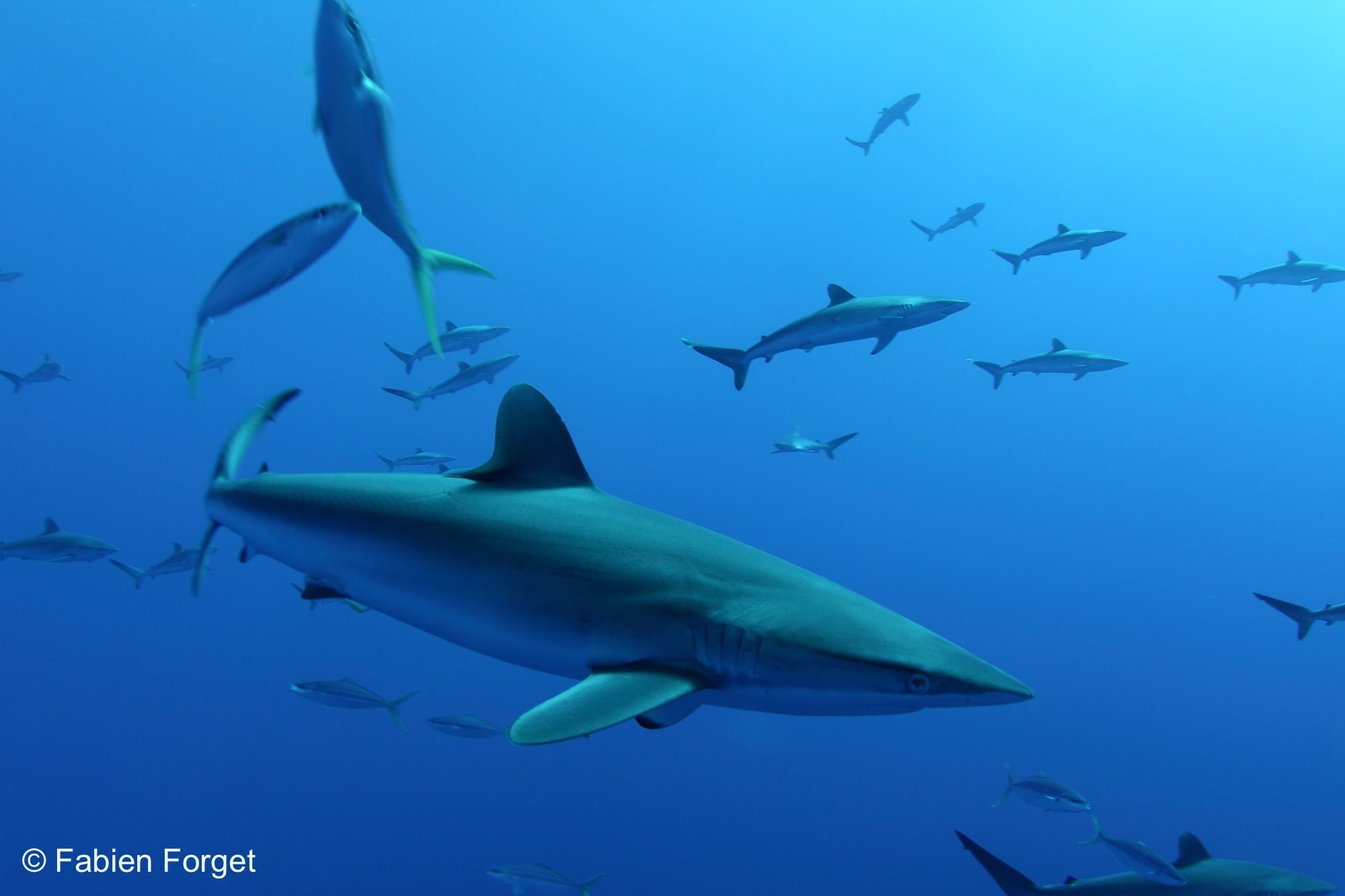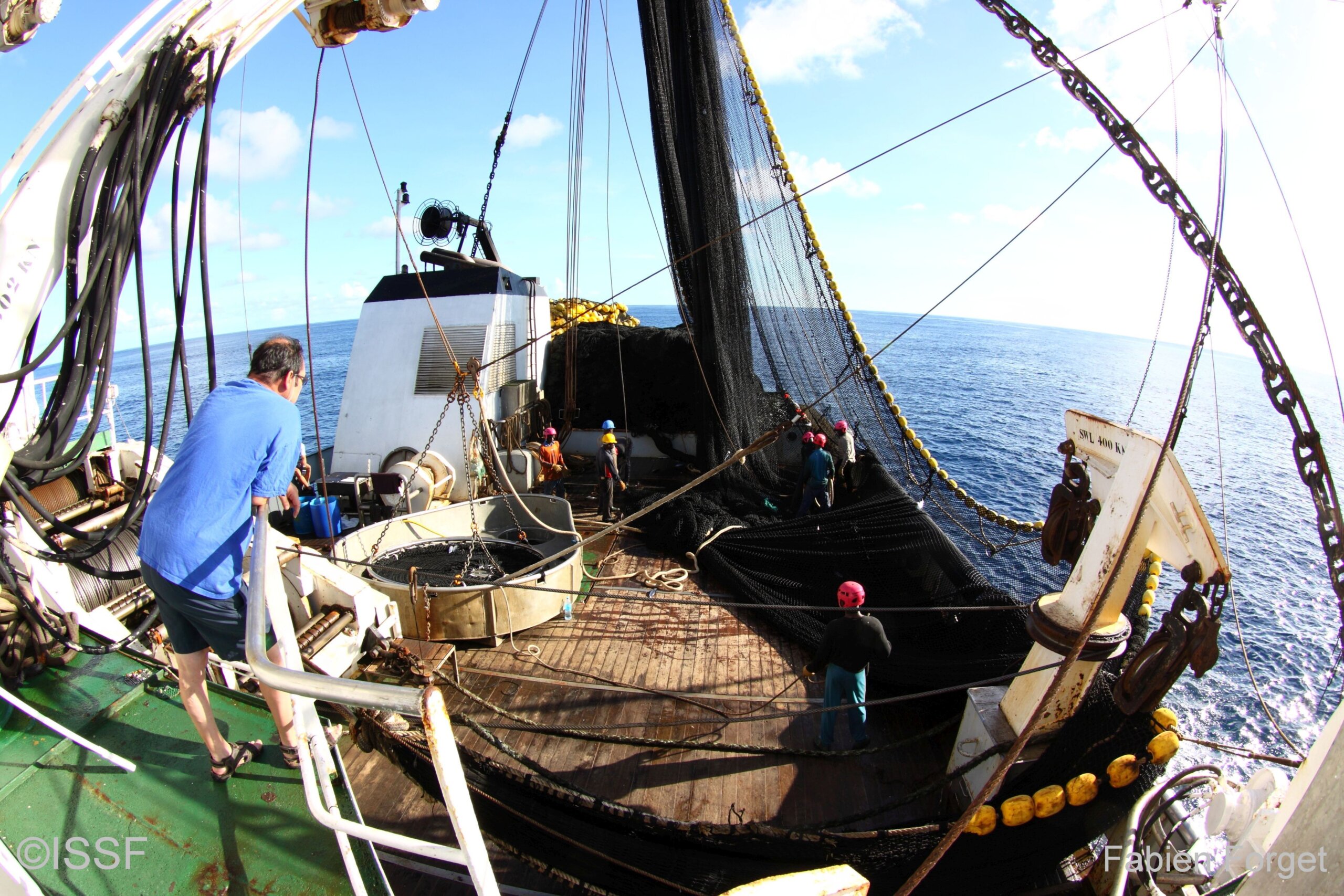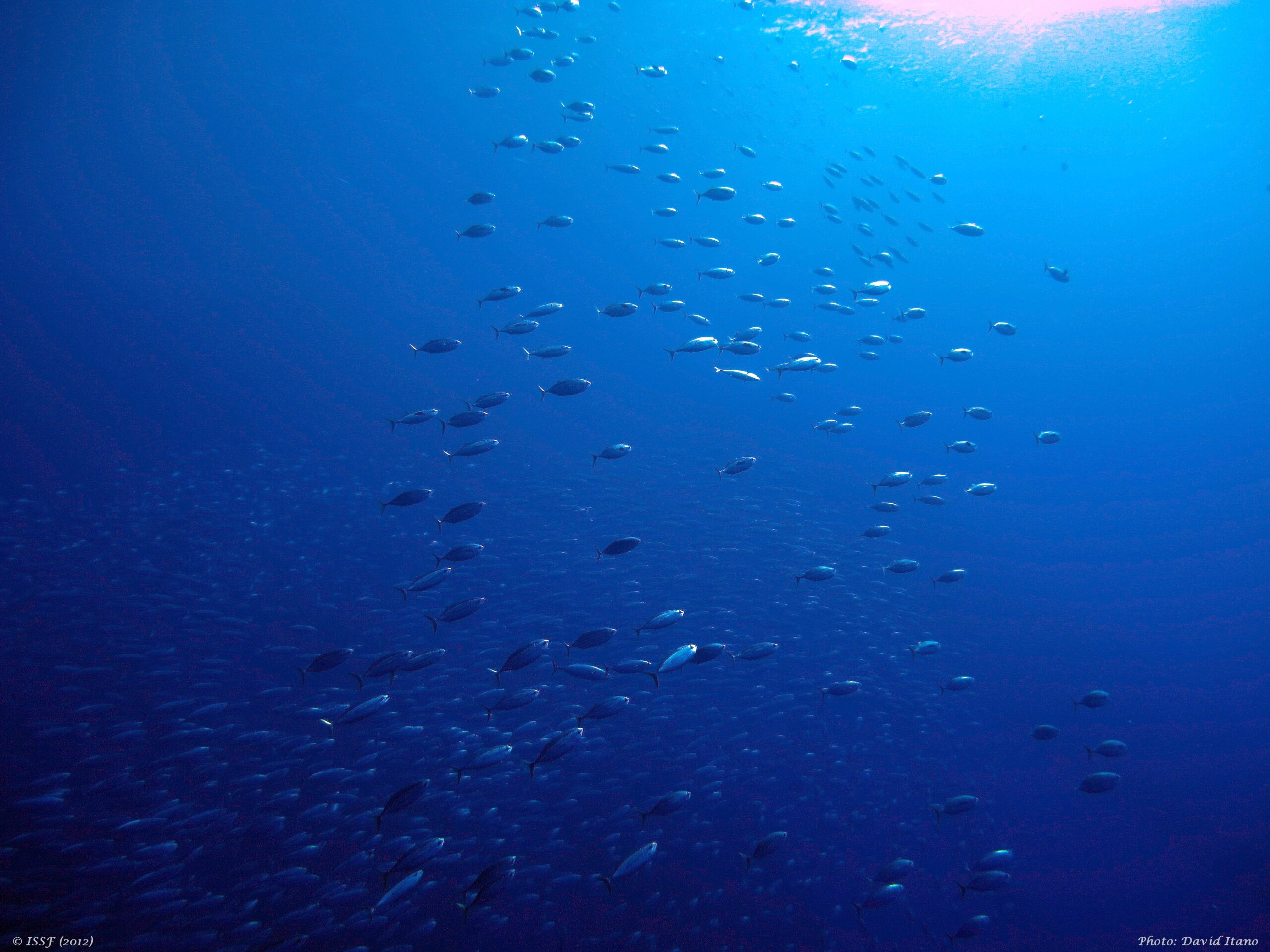
ISSF Strengthens Conservation Measures on Best Practices for Protecting Sharks, Sea Turtles, and Seabirds; Shark Finning Prevention; and FAD Management Policies
To facilitate continuous improvements toward the long term sustainability of global tuna fisheries, the International Seafood Sustainability Foundation (ISSF) today announced updates to ISSF conservation measures (CM) that help ensure best practices for protecting sharks, sea turtles and seabirds; advance shark-finning prevention; and address fish aggregating device (FAD) management.
“ISSF continuously evolves our science-based conservation measures that guide seafood companies and tuna fishers to more sustainable practices. The ISSF Board of Directors has adopted changes to three vessel-focused measures that serve to deepen each measure’s impact,” said ISSF President Susan Jackson. “First, in additionally requiring proof of implementation rather than proof of policy alone for measures on protections for non-target species and shark finning prevention. And second, in making our conservation measure on FAD management policies more robust with the addition of data-reporting provisions.”
The amended ISSF conservation measures include:
- Conservation Measure 3.6 – Transactions with Vessels Implementing Best Practices for Sharks, Sea Turtles and Seabirds
- Conservation Measure 3.1(c) – Prohibition of Transactions with Companies without a Public Policy Prohibiting Shark Finning
- Conservation Measure 3.7 – Transactions with Vessels or Companies with Vessel-based FAD Management Policies
Bycatch Prevention: Marine Species in Longline Tuna Fisheries
Since its inception, ISSF has dedicated resources and efforts to understanding bycatch issues in global tuna fisheries and helping to minimize bycatch.
ISSF expanded bycatch-mitigation measure CM 3.6 – Transactions with Vessels Implementing Best Practices for Sharks, Sea Turtles and Seabirds that requires ISSF participating companies to conduct transactions only with those longline vessels whose owners have a public policy requiring the implementation of the following best practices for sharks, seabirds and marine turtles:
- The use of circle hooks and only monofilament lines (e.g., the use of wire trace is prohibited)
- The use of whole finfish bait
- Implementation by the crew of best practice handling techniques for sharks, seabirds and marine turtles such as those outlined in the ISSF Skippers’ Guidebook to Sustainable Longline Fishing Practices
- No use of “shark lines” at any time”
The new update to this measure requires proof of implementation of the public policy, beginning December 31, 2023.
Shark Finning Prevention: Requirement to Land Sharks with Fins Naturally Attached
Sharks can be caught incidentally in tuna fishing operations, especially in longline fisheries. Sharks are also often intentionally targeted by vessels for the value of their fins in certain markets. Shark finning — the practice of retaining shark fins onboard and discarding the remaining carcasses at sea — threatens shark populations and violates the U.N. FAO Code of Conduct for Responsible Fisheries and its International Plan of Action for the Conservation and Management of Sharks.
ISSF is strengthening its existing shark-finning measure 3.1(c) – Prohibition of Transactions with Companies without a Public Policy Prohibiting Shark Finning that requires ISSF participating companies to refrain from transactions with companies that do not have a public policy prohibiting shark finning and requiring sharks be landed with fins naturally attached, if retained.
The new update to this measure requires proof of implementation of the public policy beginning July 1, 2023 for purse seine vessels and December 31, 2023 for longline vessels.
Marine Ecosystem Protections: FAD Management and Data Reporting
ISSF is committed to supporting better FAD management, globally, and recognizes that it is an important component of meeting the MSC Standard without conditions. CM 3.7 – Transactions with Vessels or Companies with Vessel-based FAD Management Policies requires that ISSF participating companies conduct transactions only with those purse seine vessels whose owners develop and make public FAD Management Policies that include the activities purse seine and supply vessels are undertaking (if any) on the following elements:
- Comply with flag state and RFMO reporting requirements for fisheries statistics by set type.
- Report additional FAD buoy data (FAD daily position data and echosounder acoustic records) for use by RFMO science bodies.
- Support science-based limits on the overall number of FADs used per vessel and/or FAD sets made.
- Use only non-entangling FADs to reduce ghost fishing.
- Mitigate other environmental impacts due to FAD loss including through the use of biodegradable FADs and FAD recovery policies.
- For silky sharks (the main bycatch issue in FAD sets), implement further mitigation efforts.
The measure is amended to add two new reporting requirements:
- With respect to the element on reporting additional FAD buoy daily position data for use by RFMO science bodies (item b above), by 1 January 2023, public FAD Management Policies developed under this measure shall include a statement that purse seine vessels and supply vessels covered by the policy are reporting FAD position data to the relevant RFMO science bodies and/or national scientific institutions and/or its flag State, with a maximum time lag of 90 days. In the event that purse seine vessels and supply vessels covered by the policy report these data to national scientific institutions and/or its flag State, they shall document that they requested that these data be made available to the relevant RFMO for scientific purposes.
- With respect to the element on reporting additional FAD buoy echosounder acoustic biomass data for use by RFMO science bodies (item b above), by 1 January 2024, public FAD Management Policies developed under this measure shall include a statement that purse seine vessels and supply vessels covered by the policy are reporting FAD echosounder biomass data to the relevant RFMO science bodies and/or national scientific institutions and/or its flag State, with a maximum time lag of 90 days. In the event that purse seine vessels and supply vessels covered by the policy report these data to national scientific institutions and/or its flag State, they shall document that they requested that these data be made available to the relevant RFMO for scientific purposes.
About ISSF Conservation Measures & Compliance Process
Since its inception in 2009, ISSF has adopted conservation measures and commitments to facilitate its mission with the intent that processors, traders, marketers and others involved in the seafood industry will follow them to facilitate real and continuous improvement across global tuna stocks. Each ISSF participating company commits to conforming to these conservation measures to improve the long-term health of tuna fisheries. They also must adhere to the ISSA Compliance Policy.
ISSF participating tuna companies, which represent the majority of the world’s canned tuna production and include well-known brand names, are audited yearly by MRAG Americas on their compliance with ISSF conservation measures.
ISSF recently released its ISSF Annual Conservation Measures & Commitments Compliance Report, which ISSF published in coordination with its recent annual report Transparent Accountability Across Tuna Fisheries. The compliance report showed a conformance rate of 99.6 percent by 25 ISSF participating companies as of March 2022.
In addition to a summary report, MRAG Americas issues individual company reports that detail each organization’s compliance with ISSF’s conservation measures. ISSF publishes these individual company compliance reports on its website.


